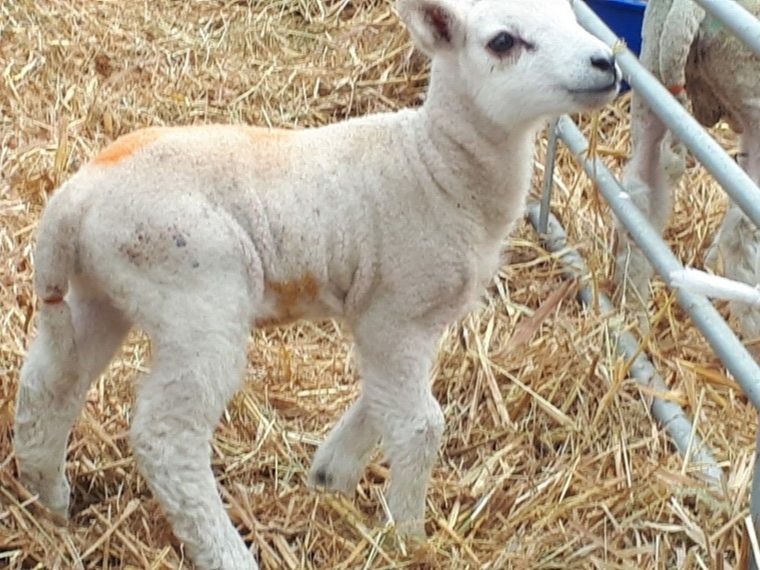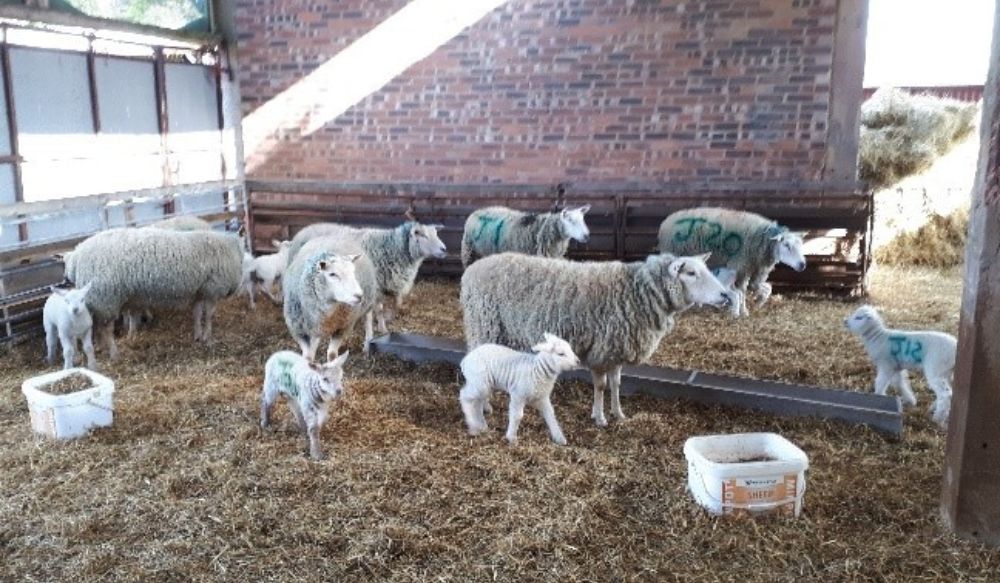- Home
- Knowledge library
- Joint-ill in lambs
Joint-ill in lambs
Joint infections in young lambs are a familiar and frustrating sight for many farmers around lambing time, which is why AHDB and the University of Liverpool, with the support of the Moredun Research Institute, funded research into improved treatment and prevention of the disease.
What is joint-ill?
Joint-ill is bacterial joint infection of young lambs that occurs in the first four weeks of life. The infection causes pain, swelling and lameness in one or more joints, and if the spine is affected, lambs may be unable to stand.
The disease occurs in both indoor and outdoor lambing flocks, and a survey from 2020 suggests that joint-ill in lambs is found on 64% of UK sheep farms.
 Jennifer Duncan
Jennifer Duncan
A lamb with an early case of joint-ill, evident by the swollen carpus on the front right leg
How should I treat joint-ill in lambs?
Even with the right antibiotics, joint infections can be difficult to treat.
It is vital that the affected lambs receive the full course of the prescribed treatment. Often, a five- or seven-day course of antibiotics is needed, sometimes longer.
The disease can be caused by a number of bacteria, some of which are resistant to certain antibiotics; to ensure you are using the correct treatment, it is essential to contact your vet to create a specific treatment plan for your farm.
This may mean housing the ewe and lambs until the antibiotic course has finished, as catching them for repeat dosing can be very difficult.
Joint-ill is painful – talk to your vet about pain relief options for lambs as well.
How can I prevent joint-ill in lambs?
To decide the best method to prevent joint-ill, it is important to establish which bacteria are causing it. For example, some bacteria are associated with tick bites in young lambs, and so focusing on tick control would be key here.
The most common cause of joint-ill is a bacterium called Streptococcus dysgalactiae. Research has shown that this bacterium can be found in most places on the farm at lambing time:
- Ewes: birth canal, udder skin, faeces and saliva
- Lambs: skin, faeces, saliva, navels and wounds
- Farm environment: straw bedding, soil and general equipment
It is important to know that the bacteria that cause joint-ill can survive well in dry and damp straw and soil (mud). This can lead to a build up of bacteria in the environment during the lambing period and cause outbreaks of joint-ill. Therefore, farm hygiene at lambing time and colostrum management remain the most important routes to prevent disease.
 Jennifer Duncan
Jennifer Duncan
Farm hygiene to reduce the risk of joint-ill
Lambs are born with no immune system and are extremely susceptible to infections. It is essential to keep the lambing environment as clean as possible. Attention to detail and employing plenty of extra help at this busy time is key to lamb survival.
- Disinfect navels in 10% iodine within 15 minutes of birth and repeat 2–4 hours later
- Keep ear tagging, castration and tail docking wounds and equipment clean
- Dag (crutch) ewes before lambing
- Wear gloves when lambing ewes and wash hands regularly
- Remove placentas and afterbirth from pens
- Change straw bedding and disinfect individual lambing pens between ewes
- Clean and disinfect group ewe housing between batches
- Outbreaks of Streptococcus dysgalactiae can be associated with particular sheds; if this occurs, clean and disinfect the housing or move to a fresh environment
- Streptococcus dysgalactiae survive in the soil; if outbreaks are occurring when lambs are outside, move to a fresh field
The importance of colostrum
Colostrum provides lambs with essential immunity to protect them from disease; it also provides high-quality nutrition.
For the ewe to produce good-quality colostrum, it is essential she is well fed for energy and protein. At lambing, ewes should be in the following body condition scores (BCS):
- Lowland ewes: BCS >3
- Hill ewes: BCS 2.5–3
Monitor colostrum intakes; check the ewe is producing colostrum from both udders and that lambs are suckling and have full bellies.
Plan ahead:
- Decide, among the team, which lambs you will routinely supplement with colostrum, e.g. all triplets, all difficult lambing cases, etc.
- Decide, with your team, which colostrum substitute you are going to use, how much to give and how often; remember, ewe colostrum is best
- Lambs need 200 ml/kg body weight of ewe colostrum in the first 24 hours of their lives
- Talk to your vet about using a Brix refractometer to measure colostrum quality
Further information
Read more about colostrum management in lambs

